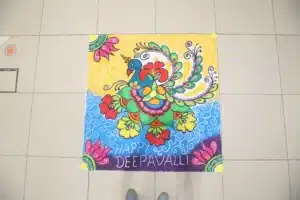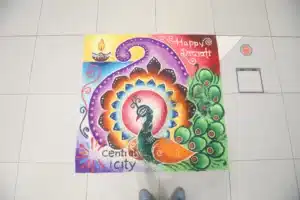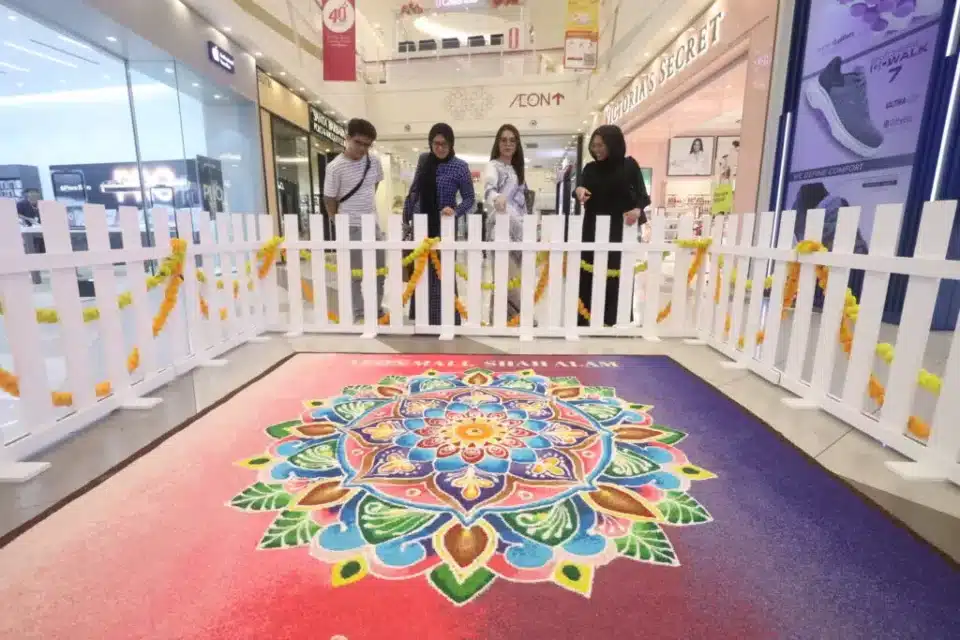Oleh Shalini Rajamogun
SHAH ALAM, Oct 31 — The floor decorations that appear each Deepavali never fail to catch the eye. The art, known as rangoli or kolam, brightens the festive season of the Festival of Lights celebrated by the Hindu community.
It is typically used as decoration during New Year celebrations and festivals such as Deepavali, as well as on days considered special, like Tuesdays and Fridays.
It is also a feature during engagement ceremonies, weddings, religious rituals, or even just as decoration for cultural events.

In north India, the term rangoli is used, another name for kolam, as commonly heard in Bollywood films.
In Malaysia, it is usually referred to as kolam, which conveys the meanings of beauty and elegance. This traditional floor art passed down through generations in the Indian community, is created using colourful rice, believed to bring blessings.
The use of rice as the main material for this decoration is also thought of as sharing blessings with the insects and birds that may visit the home.
The Saujana Puchong-based Sri Murugan Devotees Association’s coordinator Giawa Mariappan said that to create a traditional kolam, she also uses rice flour, coconut husk, and sago seeds.
According to beliefs, kolams are commonly designed with motifs of peacocks, oil lamps, or flowers, each embodying stories and legends within the Hindu faith.

“The peacock is the bird of the gods, while the oil lamp symbolises the light lit by the Hindu community to celebrate the victory of the gods after defeating evil and bringing new light into life.
“Usually, kolams are made in the courtyard or entrance of the home to make it easier for birds or insects to come and feed. When placed at the front of the home, it adds beauty and brings blessings for guests and deities alike,” she told SelangorKini in an interview on Sunday (October 26).
It is also created before sunrise as a gesture of goodwill and blessing so that each household celebrating Deepavali is granted prosperity.
Giawa said that drawing a kolam in the early morning also provides mental tranquillity. It even acts as a beneficial exercise for women, as it requires various body movements and positions.
“For example, sitting cross-legged, kneeling, bending, stretching, and moving the arms from side to side, front to back, or vice versa. Such movements in the early morning contribute to physical fitness.
“This activity also relieves stress, enhances creative thinking and problem-solving skills, and increases positive energy,” she said.
However, Giawa is concerned and disappointed that this cultural art form is increasingly forgotten due to technological advancements, along with significant shifts in modern lifestyles.
“In conclusion, every cultural heritage faces great challenges if it is not passed down systematically,” she said.






